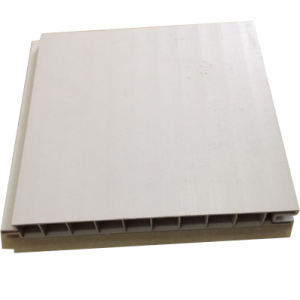The L10′s 500 or 1,000 nits 10.1-inch 1920 x 1200 pixel IPS display with near perfect viewing angle from all directions is bright and easy on the eyes, indoors and out. It does a decent job controlling reflection and remaining usable even in bright sunlight. Using capacitive multi-touch, Xplore also baked in automatic switching between "glove" and "wet" modes. Also available are active pen versions that provide the kind of precision needed for certain applications.
Selector.com is the premier destination for architects, designers and builders looking for quality products from leading suppliers.
Get Free Sample PDF Copy of Global Textile Acoustic Panel Industry Report at https://www.qyresearch.com/sample-form/form/720002/global-textile-acoustic-panel-industry-research-report-growth-trends-and-competitive-analysis
I liked the implementation Xiaomi has gone with – which is a lot more like what you’d find on an iPhone – in comparison to Google’s setup, but one gripe I had was with the ‘back’ gesture. That’s triggered by swiping in from either edge of the screen. Since Android apps more often than not hide a hamburger menu and require you to pull it out from the left side of the screen, you’ll find yourself going back instead of pulling out the menu more often than not. The same is true when you’re trying to swipe away notifications and instead end up closing the notification pane. To avoid that, Xiaomi reserves the lower half of the screen for the back gesture and the top half for the app but on a screen as large as this, it’s rather hard to successfully pull it off every time. As bezel-less displays become more common in the Android space, I really hope that either the app ecosystem will evolve vis a vis hamburger menus or that Xiaomi and others will be able to find a better implementation for gestures.

Installation view of Svizzera 240: House Tour at the Swiss Pavilion at the 16th International Architecture Exhibition, La Biennale di Venezia. Photo: Wilson Wootton.
Suitable for both commercial and domestic new-build or renovation projects, Freefoam says X-Wood can also be successfully used in coastal and highly exposed areas, thanks to its high-performance credentials.
Meyers wanted to turn the carriage house into a tap house for his burgeoning hard cider company, so he took the appearance of the New Jersey applewood—which a friend of a family member just happened to have—as a sign.
The infotainment system also features two multi-function rotary controllers that are distinguished by their tactile, rubberized outer surface, Satin Chrome bezels and seamlessly-integrated digital display screens. The rotary transmission controller rises silently from the center console on start-up.

Each of the fabricated surfaces has been characterized during pool boiling of saturated water at atmospheric conditions using a custom built experimental apparatus. The complete details of the apparatus, testing procedures, and experimental uncertainty can be found in the Methods Section as well as prior publications14,19. Briefly, each surface was soldered to an insulated copper heater block and submerged in a bath of saturated water. The heat flux delivered to the surface, q”, is periodically increased in small increments and the system is left to reach thermal equilibrium, typically 10–20 minutes. After this the surface temperature and heat flux are recorded, and the process is repeated up until the CHF is reached. CHF is taken as the highest stable heat flux prior to the uncontrollable increase in surface temperature associated with dry-out. The average wall temperature at the surface of the sample, , is measured using a thermocouple placed at the top of the heater block, and accounts for the various thermal resistances between this thermocouple and the surface. These include the resistances across the solder interface and bulk copper14,19, as well as the resistance across the composite copper-epoxy region near the surface of the sample. While the embedded epoxy produces in-plane temperature variations on the surface, it does not greatly impact the overall thermal resistance of the sample itself. For the extremely thin samples tested in this work (1 mm thickness), the increase in overall thermal resistance of the substrate was ~6% for the N = 4 cm−1 design. For a more realistic wall thickness of 1/4 inch (6.35 mm), the increase in thermal resistance associated with adding embedded epoxy divisions drops to less than 1%.
Language Option: Españolbeta | Pусский | Français | Deutsch | Português | Italiano | Nederlands | 한국어 | polski | Türk | 日本語 | Indonesian | ภาษาไทย | tiếng Việt
The regions covered in the reports of global Textile Acoustic Panel market are South America, Europe, the Asia Pacific, the Middle East, and Africa, and North America. North America is showing a significant growth in the global Textile Acoustic Panel Industry over the projected period (2018-2025). The Asia Pacific is growing at a remarkable rate. Particularly, the emerging economies such as India and China are expected to grow during the projected period.
Luxury didn’t always mean loud, and there are lessons to be learned from the glamorous restaurants of the past, including actual mid-century-modern eateries. From the 1940s through the early 1990s, fine-dining establishments expressed luxury through generous seating, plush interiors, and ornate decor. But more important, acoustic treatments themselves were a big part of that luxury.
Showbiz raising walls of Edmond facility this week | News | Ceiling Wall Panels Related Video:
Our target should be to consolidate and enhance the top quality and service of current goods, in the meantime frequently create new products to satisfy diverse customers' calls for for Waterproof Pvc Ceiling Tiles , Polycarbonate Plastic Corrugated Wave Sheet , Pvc Ceiling Design For Hall , Our items are widely recognized and trusted by users and can meet continuously changing economic and social needs. We welcome new and old customers from all walks of life to contact us for future business relationships and mutual success!